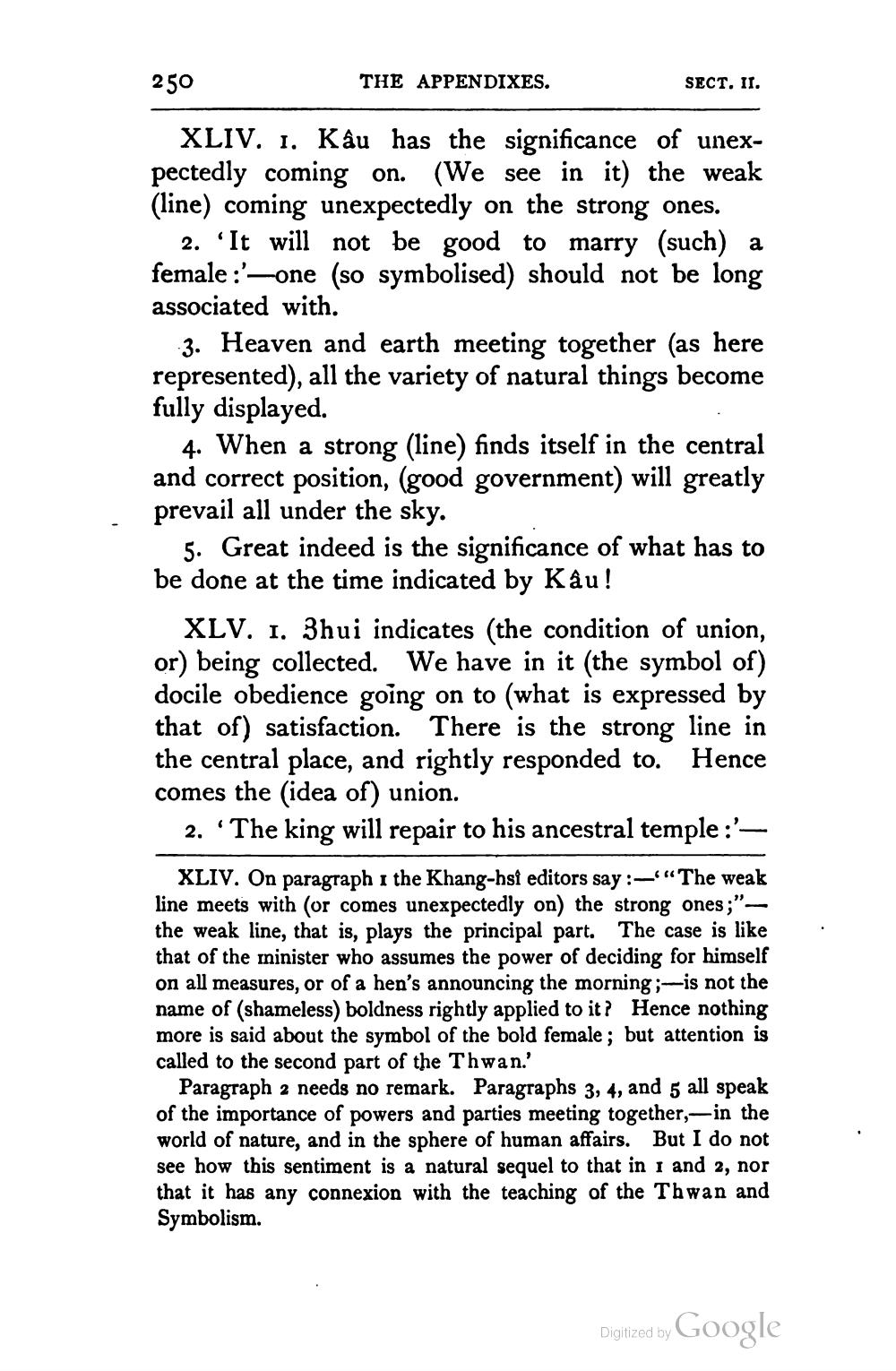________________
250
THE APPENDIXES.
SECT. II.
XLIV. 1. Kau has the significance of unexpectedly coming on. (We see in it) the weak (line) coming unexpectedly on the strong ones.
2. 'It will not be good to marry (such) a female :'-one (so symbolised) should not be long associated with.
3. Heaven and earth meeting together (as here represented), all the variety of natural things become fully displayed.
4. When a strong (line) finds itself in the central and correct position, (good government) will greatly prevail all under the sky.
5. Great indeed is the significance of what has to be done at the time indicated by Kâu!
XLV. 1. Zhui indicates (the condition of union, or) being collected. We have in it (the symbol of) docile obedience going on to (what is expressed by that of) satisfaction. There is the strong line in the central place, and rightly responded to. Hence comes the (idea of) union.
2. 'The king will repair to his ancestral temple :'
XLIV. On paragraph 1 the Khang-hsi editors say :--""The weak line meets with (or comes unexpectedly on) the strong ones;"the weak line, that is, plays the principal part. The case is like that of the minister who assumes the power of deciding for himself on all measures, or of a hen's announcing the morning ;-is not the name of shameless) boldness rightly applied to it? Hence nothing more is said about the symbol of the bold female ; but attention is called to the second part of the Thwan.'
Paragraph 2 needs no remark. Paragraphs 3, 4, and 5 all speak of the importance of powers and parties meeting together,-in the world of nature, and in the sphere of human affairs. But I do not see how this sentiment is a natural sequel to that in i and 2, nor that it has any connexion with the teaching of the Thwan and Symbolism.
Digitized by
Digitized by Google




